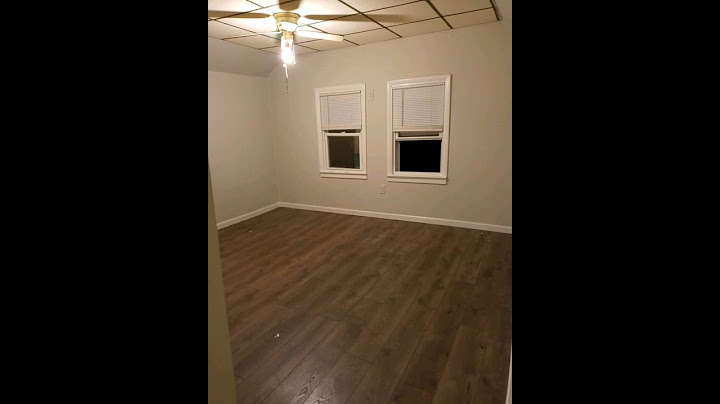Depreciation is part of tracking assets. Integrating depreciation and balance sheet accounting will help you take your asset tracking game to the next level. Show
Instead of keeping asset depreciation value a mystery, take more time to see how your assets are aging. If your accounting department isn’t already keeping an eye on depreciation, it’s time to make it part of their job. Where is Depreciation Tracked?Depreciation is typically tracked one of two places: on an income statement or balance sheet. For income statements, depreciation is listed as an expense. It accounts for depreciation charged to expense for the income reporting period. On the other hand, when it’s listed on the balance sheet, it accounts for total depreciation instead of simply what happened during the expense period. Your balance sheet will record depreciation for all of your fixed assets. This means you’ll see more overall depreciation on your balance sheet than you will on an income statement. Here’s the difference. Let’s say you acquire a large piece of equipment that cost you $120,000. It has a useful life of five years, which means it depreciates at $2,000 a month. You’re looking at your company’s income statement for July of the third year you’ve had this machine. For the month of July, this equipment’s depreciation expense is $2,000. However, your balance sheet will show an accumulated depreciation value of $60,000, since that is what has added up in the 30 months you’ve had this asset. Why Depreciation and Balance Sheet Over Other Places?Tracking depreciation and balance sheet together helps you get a complete picture of how your assets are depreciating. You can see what’s happening in a month to help you make sure you bring in the right amount of income during that time period by only looking at income statements. However, if you want to get ahead of your competition, you need to focus on the overall picture. Knowing where your assets will be valued a year from now will help you determine your business worth. Seeing your company’s net value decline over time is a great motivator for making profit generating aspects of your business more of a priority. It’ll also help you identify any assets that are depreciating too quickly, or that are holding up more than you expected. Having an overall picture of your asset situation will also help you identify which items need maintenance and which ones aren’t worth holding onto anymore. If you see that some assets have outlived their expected lifespan and are costing you thousands in upkeep, it’s time to trash it for something that will be worth the effort. Your company’s balance sheet is a great place to monitor the overall status of your assets and ventures. Keeping it all in the same place helps you identify patterns that would be harder to spot otherwise. If you see that the estimated depreciation is lower than what is currently happening, you can investigate possible causes and fix them before they get too out of hand. Preventing major problems will save you thousands of dollars and stop crises from hurting your business. Asset Panda understands that the financial side of your business can get extremely complicated. Trying to manage all of the aspects that affect your profits can quickly become overwhelming if you don’t have a system to manage them. We created our software platform to help you simplify everything related to your assets, so you can put your attention on the more complicated aspects of your company. 3 Min. Read
March 28, 2019  Accumulated depreciation is not a current asset account. Accumulated depreciation accounts are asset accounts with a credit balance (known as a contra asset account). It is considered a contra asset account because it contains a negative balance that intended to offset the asset account with which it is paired, resulting in a net book value. It appears on the balance sheet as a reduction from the gross amount of fixed assets reported. Accumulated depreciation is not an asset because balances stored in the account are not something that will produce economic value to the business over multiple reporting periods. Accumulated depreciation actually represents the amount of economic value that has been consumed in the past. This article will also discuss: Is Accumulated Depreciation a Current Asset or Fixed Asset? What Is Accumulated Depreciation Classified as on the Balance Sheet? Is Accumulated Depreciation a Current or Long-Term Asset? NOTE: FreshBooks Support team members are not certified income tax or accounting professionals and cannot provide advice in these areas, outside of supporting questions about FreshBooks. If you need income tax advice please contact an accountant in your area. Is Accumulated Depreciation a Current Asset or Fixed Asset?As we mentioned above, depreciation is not a current asset. It is also not a fixed asset. Depreciation is the method of accounting used to allocate the cost of a fixed asset over its useful life and is used to account for declines in value. It helps companies avoid major losses in the year it purchases the fixed assets by spreading the cost over several years. Current assets are not depreciated because of their short-term life. What Is Accumulated Depreciation Classified as on the Balance Sheet?The total decrease in the value of an asset on the balance sheet over time is accumulated depreciation. The values of all assets of any type are put together on a balance sheet rather than each individual asset being recorded. No accumulated depreciation will be shown on the balance sheet. A machine purchased for $15,000 will show up on the balance sheet as Property, Plant and Equipment for $15,000. Over the years the machine decreases in value by the amount of depreciation expense. In the second year, the machine will show up on the balance sheet as $14,000. The tricky part is that the machine doesn't really decrease in value - until it's sold. So, the asset shows up in two different accounts: the asset's depreciated cost and accumulated depreciation. The total of the two is the original cost of the asset. The difference between the two is the book value of that asset. The assets’ value on the balance sheet is expressed as:
Is Accumulated Depreciation a Current or Long-Term Asset?Accumulated depreciation is an asset account with a credit balance known as a long-term contra asset account that is reported on the balance sheet under the heading Property, Plant and Equipment. The amount of a long-term asset’s cost that has been allocated, since the time that the asset was acquired. RELATED ARTICLES Is accumulated depreciation on the balance sheet?Accumulated depreciation is presented on the balance sheet just below the related capital asset line. Accumulated depreciation is recorded as a contra asset that has a natural credit balance (as oppose to asset accounts with natural debit balances).
Where is depreciation in income statement?Key Takeaways
Depreciation is a type of expense that is used to reduce the carrying value of an asset. Depreciation is entered as a debit on the income statement as an expense and a credit to asset value (so actual cash flows are not exchanged).
|

Related Posts
Advertising
LATEST NEWS
Advertising
Populer
Advertising
About

Copyright © 2024 en.idkuu.com Inc.
















